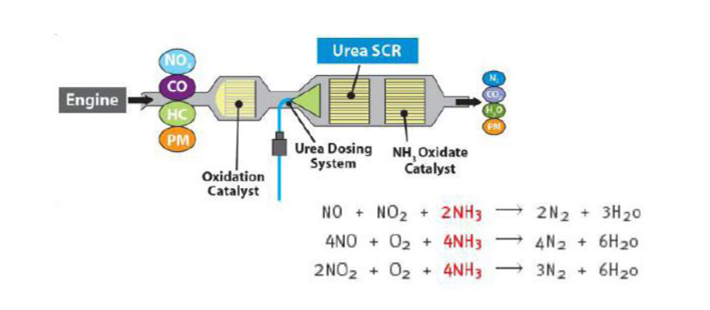Currently, protecting the environment from air pollution is one of the most urgent issues of concern. And ships are one of the main causes of that increase in pollution that we need to control.
Therefore, the International Maritime Organization (IMO) has issued regulations controlling the sulfur content in fuel used for merchant ships to be limited to 0.5% globally and 0.10% in the ECA region (Emissions Control Area includes the Baltic Sea region, the North Sea region, the United States, Canada and the United States Caribbean Sea region).
- What is the selective catalytic reduction system?
The selective catalytic reduction system (SCR), is the name of an active emission control technology system commonly applied to diesel engines in road and waterway vehicles, reducing polluted emissions into the environment, this technology needs to use urea solution sprayed into the exhaust gas stream of diesel engines. The SCR system is designed to allow chemical reactions to take place to eliminate the harmful nitrogen oxide gas present in the engine exhaust.

The catalyst used for the SCR system is called AdBlue solution, also known as urea water and also known as Diesel Exhaust Fluid (DEF). DEF sets up a chemical reaction that converts nitrogen oxides into nitrogen, water vapor and a small amount of carbon dioxide (CO2), which is then expelled through the engine’s exhaust.
- Where is SCR used?
The SCR system has been used for many years in road and water transport engines, industrial machinery, construction vehicles, etc. With emissions standards for the marine industry increasingly tightening, the SCR system has also been widely used on ships to meet IMO Tier 3 standards.

Under these regulations, vessels post-January 1, 2016 and operating in Emission Control Areas must comply with the new emission limits. These emission limits apply to engines with a capacity greater than 130 kW installed on ships with a tonnage greater than 5,000 GT.
Therefore, the SCR system is gradually being widely applied on modern ship engines, affirming its role as an extremely advanced, environmentally friendly and environmentally friendly emission control system, and meets strict emissions standards.



